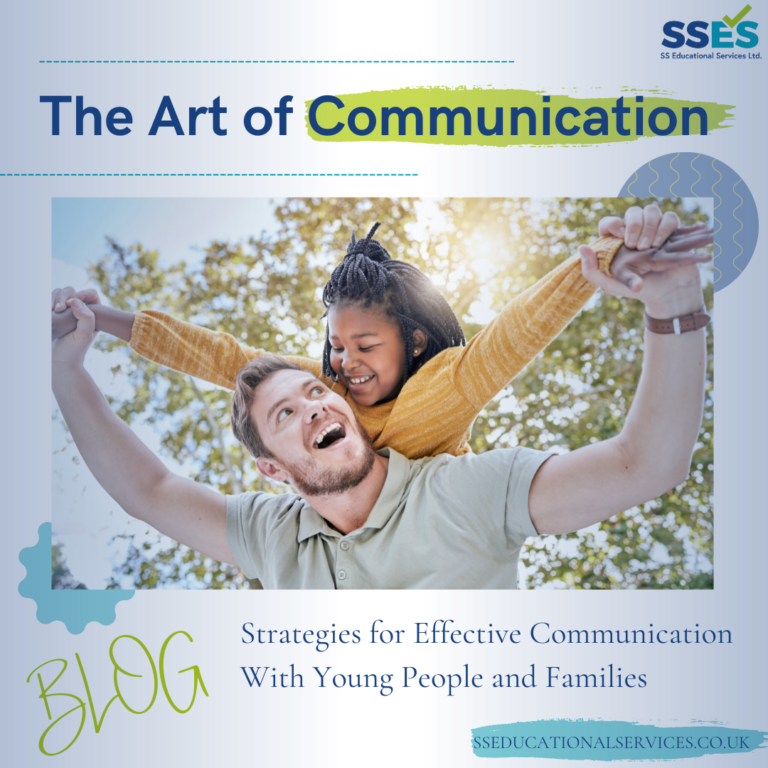The Art of Communication: Effective Strategies for Engaging with Children, Young People, and Families
In the multifaceted, dynamic landscape of working with children, young people, and their families, communication is the keystone for building strong, impactful relationships. As a practitioner or manager in the ‘Children, Young People and Families’ apprenticeships, understanding the art of communication is crucial. In this post, we explore effective communication strategies and the importance of collaborative partnerships for children’s overall wellbeing.
1. Active Listening
Children and young people thrive when they feel heard and understood. Active listening involves fully concentrating on what is being said, demonstrating engagement through non-verbal cues like nodding, and offering empathetic responses. For example, when a child is sharing their day at school, instead of merely saying “Oh, really?” try “That sounds interesting, could you tell me more about it?” This not only promotes a positive and open communication environment but also builds trust.
2. Appropriate Language Use
Communicating with young individuals requires us to get on their level. Speak with an age-appropriate vocabulary and tone, avoiding jargon and complex phrases. If you’re discussing a difficult topic with a younger child, you might say, “It seems like you’re feeling a bit mixed up inside,” instead of “You appear to be experiencing inner conflict.”
3. Non-Verbal Communication
A significant amount of communication is non-verbal. Be mindful of your body language and facial expressions as these can have a profound impact on how your message is received. Encourage open body language, maintain eye contact and reflect expressions that match the sentiment of the conversation.
4. Honesty and Transparency
Children and young people appreciate honesty. If they ask a difficult question, and you’re unsure of the answer, it’s perfectly acceptable to say, “I’m not sure, but let’s find out together.” This approach enhances mutual respect and shows that you value their queries.
5. Open Dialogue with Families
It’s essential to maintain an open dialogue with the families as well. Regular check-ins, whether through meetings, phone calls, or emails, are crucial in keeping them updated and involved in their child’s progress. An example might be, “I wanted to share that Jamie has been particularly helpful in class this week.”
6. Collaborative Problem-Solving
Include children, young people, and their families in problem-solving. For instance, if behavioural issues arise, involving all parties in discussions and solutions can foster understanding, develop resilience, and reduce the likelihood of similar problems in the future.
7. Cultural Sensitivity
Recognising and respecting diverse cultural backgrounds is essential. This might involve learning key phrases in a family’s first language or understanding their customs and traditions. This respect demonstrates your commitment to a safe, inclusive environment.
Understanding these communication strategies is important, but implementing them effectively requires patience, practice, and authenticity. Communication isn’t just about delivering a message but understanding the emotional nuances that accompany it.
Ultimately, the effectiveness of our communication directly influences the relationships we build with children, young people, and their families. These relationships play a pivotal role in the child’s overall wellbeing and development. By creating an atmosphere of respect, understanding, and collaboration, we are nurturing an environment where every child has the opportunity to thrive.
Whether you’re a Level 4 Practitioner or a Level 5 Manager in ‘Children, Young People and Families’, your communication skills play a vital role. Embrace these strategies and nurture your connections, for in these bonds lies the true power of positive change.


